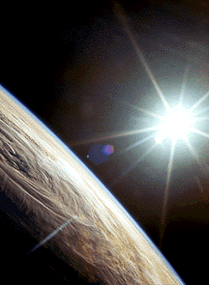The Earth with its Sun.
Click on image for full size
Aris Multimedia Entertainment, Inc. 1994
The Earth's Orbit
Like all planets in our solar system, the Earth is in an elliptical
orbit around our Sun. In Earth's case, its orbit is nearly circular, so
that the difference between Earth's farthest point from the Sun and
its closest point is very small. Earth's orbit defines a
two-dimensional plane which we call the
ecliptic.
It takes roughly 365 days for the Earth to go around the Sun once.
This means that the Earth is rushing through space around the Sun at a
rate of about 67,000 miles per hour! The time it takes for the Earth
to go around the Sun one full time is what we call a year.
The combined effect of the Earth's orbital motion and the tilt of its rotation axis result in the seasons.
You might also be interested in:

Let's get rid of some common misconceptions about the seasons. The Earth's orbit is in the shape of an ellipse, so that sometimes the Earth is a little bit closer to the Sun than at other times. Is this
...more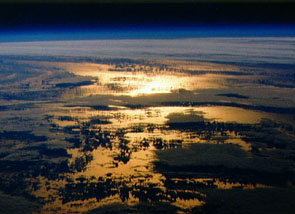
Ok. Let's get some terminology down first. If a body (like the Earth) is orbiting around the Sun, we say it is closest to the Sun at perihelion and farthest from the Sun at aphelion. If a body (like the
...more
Some basic concepts find applications in many, many places throughout science, especially physical science. We have grouped these "starting points for science" into three clusters: space, time, and matter.
...more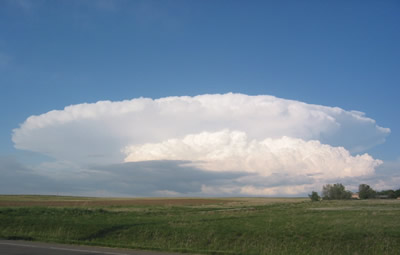
Earth's atmosphere changes over time and space, giving rise to weather and climate. Fundamental Concept 4.1 Weather is the state of Earth's atmosphere at a particular place and time. The climate of a particular
...more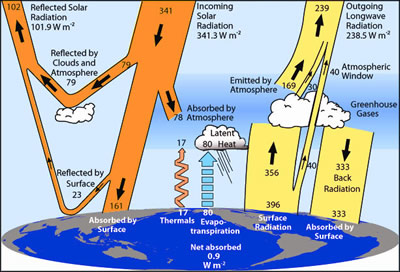
Energy from the Sun drives atmospheric processes. Fundamental Concept 2.1 Earth receives energy in the form of electromagnetic radiation from the Sun. Some of this solar energy is absorbed by the atmosphere,
...more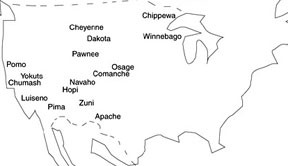
By 30,000 B.C,. Asian hunter-gatherers had crossed the Bering Strait into North America. These people were the first to inhabit this new land and so they are known as the Native Americans of North America.
...more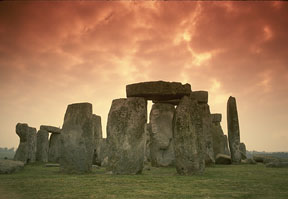
"The movements of the heavenly bodies are an admirable thing, well known and manifest to all peoples. There are no people, no matter how barbaric and primitive, that do not raise up their eyes, take note,
...more


